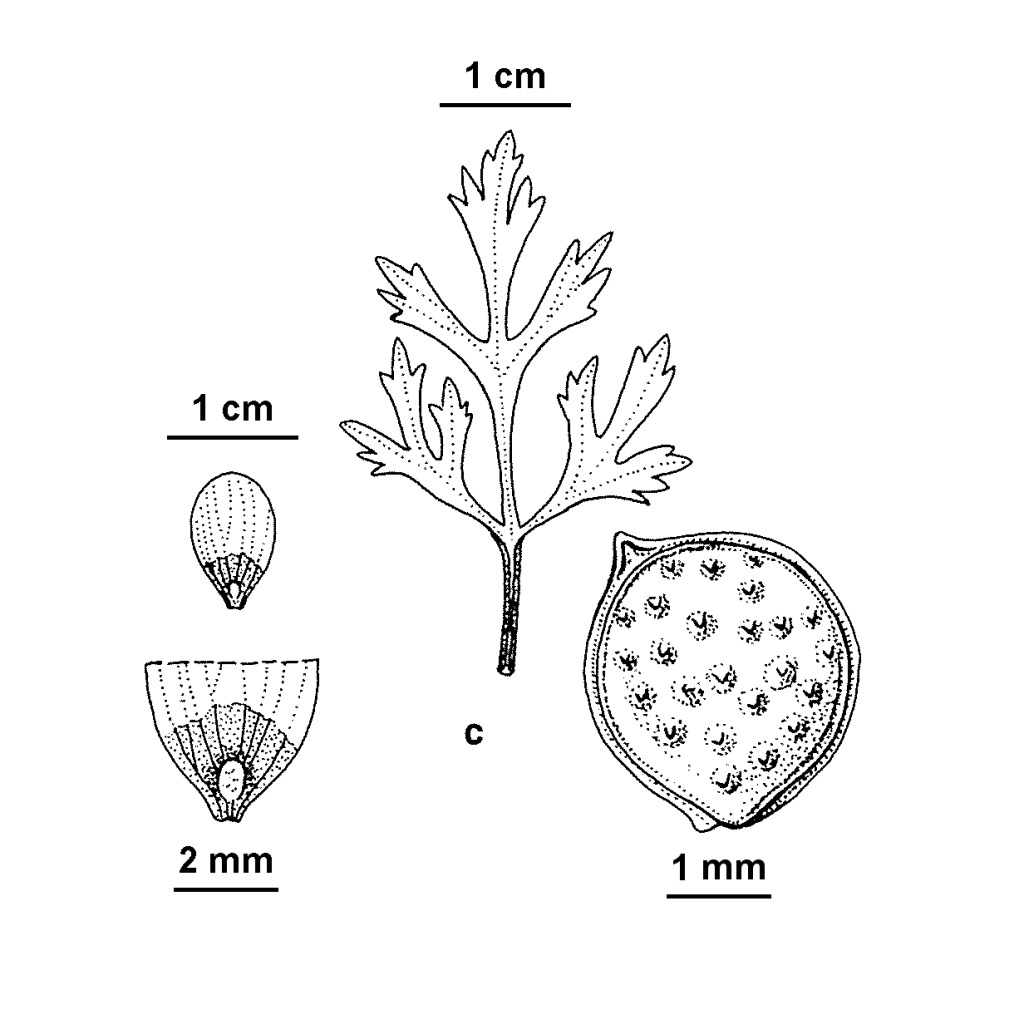Ranunculus trilobus
Desf. Large Annual ButtercupErect, glabrous or sparsely pilose annual to c. 80 cm high. Leaves mostly cauline (but juvenile leaves more or less rosetted and orbicular to reniform); petioles to c. 15 cm long; lamina trifoliolate, to c. 6 cm long and wide, the segments usually again 3-lobed with variably toothed margins. Flowers in loose terminal cymes, pedicels elongating to c. 5 cm in fruit; sepals 5, ovate, 3–5 mm long, usually with a few hairs on back, strongly reflexed; petals usually 4 or 5, obovate, 4–6 mm long, yellow, glossy; nectary lobe 0.5–1 mm long, cuneate to obovate, attached near base only; stamens usually 10–20. Achenes usually 30–50 in a slightly elongate head, broadly obovate to orbicular, 2–3 mm long overall, almost flat, the faces more or less evenly covered with small tubercles, margin slightly thickened; beak triangular, c. 0.2 mm long; receptacle hispid. Flowers Oct.–Dec.
Wim, VVP, VRiv, MuF, GipP, WaP, DunT, NIS, HSF. Also naturalised WA, SA, NSW, Tas. Native to south-western Europe. Occasional on heavy winter-wet clays and clay-loam soils, mostly near the Murray River between Albury and Kerang, but also west of Melbourne (e.g. Craigieburn, Geelong, Colac, Horsham etc.) where apparently becoming more common in recent years.
Sometimes invasive in pasture, then cattle will avoid both it and associated forage plants.
Walsh, N.G. (1996). Ranunculaceae. In: Walsh, N.G.; Entwisle, T.J., Flora of Victoria Vol. 3, Dicotyledons Winteraceae to Myrtaceae, pp. 35–63. Inkata Press, Melbourne.
 Spinning
Spinning



